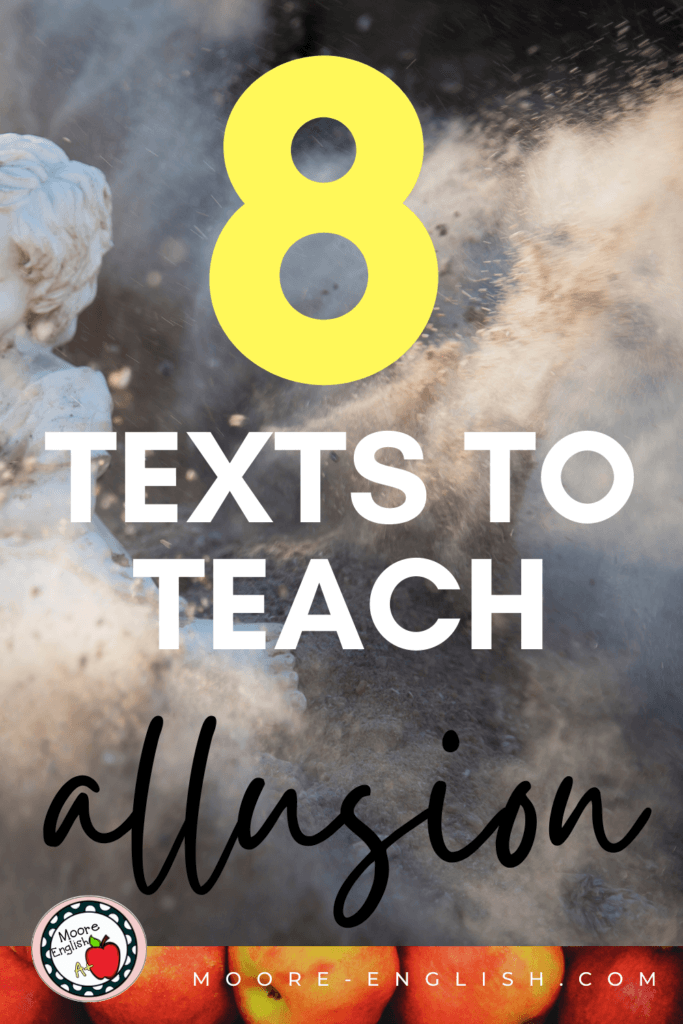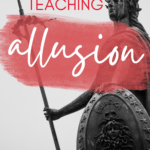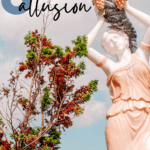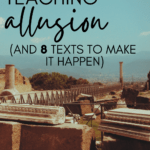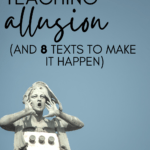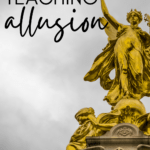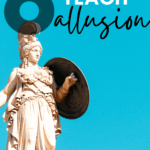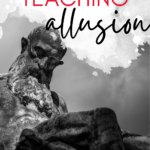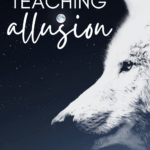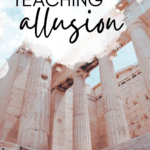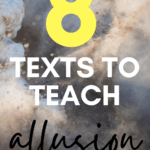My students are sometimes skeptical about the power of allusions. By and large, they are often unaware of the allusions that surround them all the time. To help students understand the frequency of allusions, I often give a brief mini-lecture about the apple from the Garden of Eden.
What fruit does Snow White eat? An apple.
What fruit appears on the cover of Twilight, a book that’s all about temptation? An apple.
And what icon appears on the back of most cell phones, tablets, and computers? An apple.
In other words, allusions are all around us all the time. To help students appreciate allusions, I carefully choose texts that make use of common allusions. While it would be unreasonable to teach each of these texts every year, I make an effort to include as many as possible. Of course there are more options for studying allusion, but this is a great starter pack!
Poems for Teaching Allusions
As with many types of figurative language, allusions are often easily studied in poetry. The compressed nature of poetry makes it a prime candidate for evaluating a variety of literary elements. Over the years, I’ve put together these four favorite poems for helping students process allusion.
First, “Caged Bird” by Maya Angelou draws on “Sympathy” by Paul Laurence Dunbar. The allusion in the refrain of “I know why the caged bird sings” draws on the legacy of Black poetry and history. Since “Caged Bird” is a fairly straightforward poem, this can be a good place to begin. Additionally, since the themes Angelou discusses remain relevant, this is a poem students find engaging. Read it here.
“The Second Coming” by William Butler Yeats is also a short poem that helps students understand allusions. This poem makes a series of allusions, so students can see how the allusions work together to create the poem’s doomed mood. Furthermore, the ubiquity of this poem (the allusions made to this poem) shows its endurance. Read it here.
If you’re interested in a poetry pairing to help students analyze a variety of allusions, consider pairing “Eden, Then and Now” by Ruth Stone with “Us vs. Them” by David Tomas Martinez. Both of these poems allude to the American Dream. Furthermore, each author uses a series of historical allusions to situate their discussion of the American Dream in a specific context. Grab both of these poems in the Great Gatsby Synthesis Bundle.
Mythology and Allusion
While Biblical allusions are common in Western literature, mythological allusions are, perhaps, even more common. My students usually enjoy mythology. While we don’t have a specific mythology unit, I try to incorporate it as often as possible. These four titles are a good way to achieve that goal:
First, the article “To Live is an Act of Courage” by Jennifer Michael Hecht, which I first read in American Scholar, discusses PTSD in soldiers and veterans. To frame this article, Hecht draws heavily on the story of Ajax. This is a good article for understanding how authors can blend genres and use allusions to frame their arguments.
Similarly, “No Second Troy” by William Butler Yeats draws on some of the same mythology as Hecht’s article. While Yeats is less interested in the ancient world, he is able to use allusions to Troy in a powerful way. This is a classic lover-scorned poem that is sure to engage students. Read it here.
Additionally, “The Cyclops in the Ocean” by Nikki Giovanni connects a natural disaster to the Cyclops episode from The Odyssey. This is a very short poem, so students can easily revisit the Cyclops episode if necessary. Plus, this is an interesting poem in how its lessons are so far divorced from the lessons in the source text. Read it here.
Finally, “Failing and Flying” by Jack Gilbert draws on the story of Icarus. Pairing this poem with the Fall of Icarus can help students understand the speaker’s argument. Gilbert’s version of romantic love is very different from Yeats’ version. His final conclusion about Icarus’ flight is also interesting and can lead to a good classroom discussion. Read it here.
Allusions and Short Works
From time to time, understanding an allusion makes or breaks a student’s understanding of a text. When that happens, it’s essential that teachers help students understand the impact of the allusion. To teach this kind of skill, consider these texts:
First, “Credo” by Neil Gaiman is relatively short. This text, which I first read in New Statesman America in 2015, responds to the terrorist attack against the French satirical magazine Charlie Hebdo. If students do not understand the allusions Gaiman makes to this attack, they will misunderstand later allusions to Islam and freedom of speech. This is a text I use to emphasize the importance of text features, to practice analyze parallelism, and to complete this paraphrasing and summarizing graphic organizer.
Additionally, part way through “The Yellow Wall-paper” by Charlotte Perkins Gilman, the speaker’s husband makes an allusion to the poem “Against Idleness and Mischief” by Isaac Watts. It’s an obscure allusion, and while it’s not make-or-break, understanding the allusion helps students understand the speaker’s husband and his limitations. Grab both of these texts in “The Yellow Wall-Paper” Instructional Pack.
Finally, the essay “Words and Behavior” by Aldous Huxley draws heavily on historical allusions. Huxley writes in response to World War II, and he makes frequent references to its propaganda, leaders, and battles. Understanding these allusions is key to understanding Huxley’s argument. This is an incredibly challenging but rewarding text. Read it here.
What other texts do you use to teach allusion?

